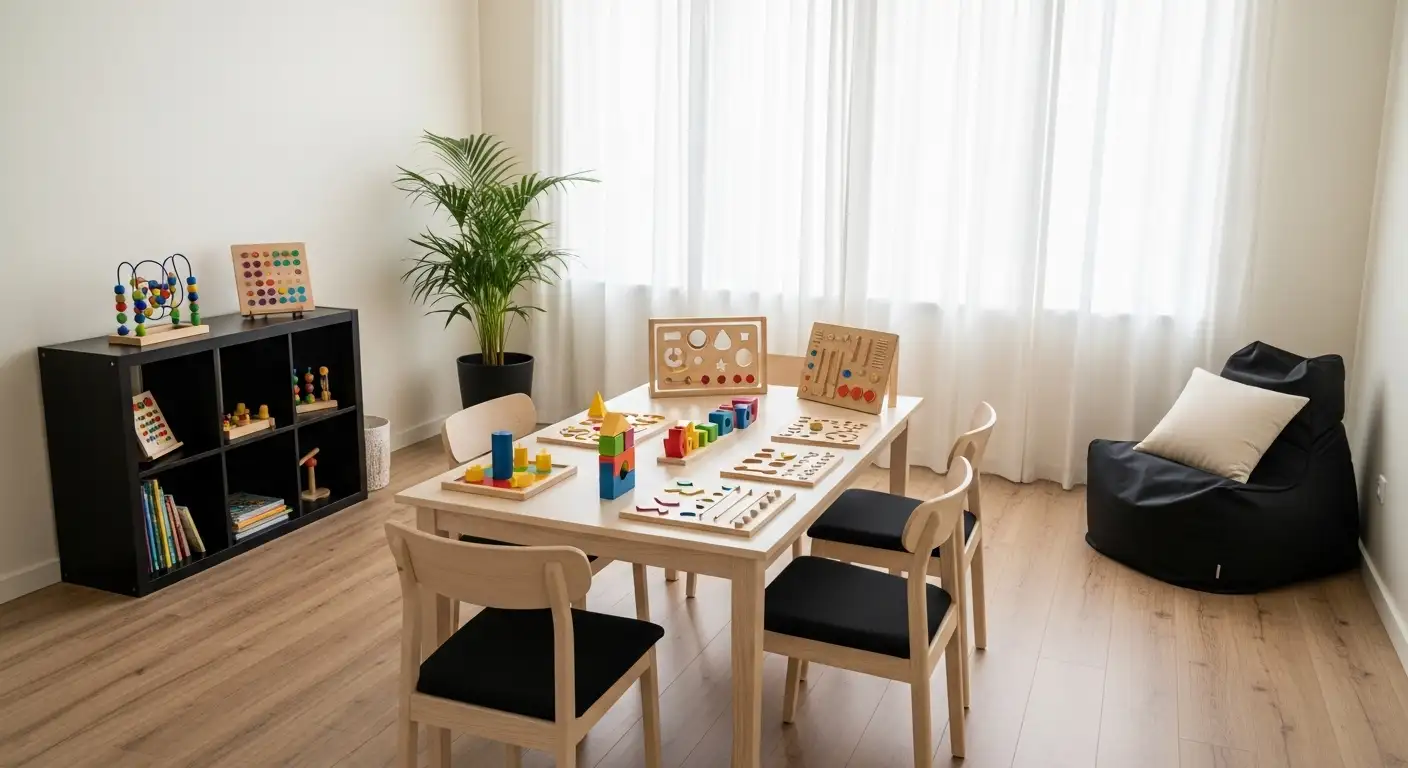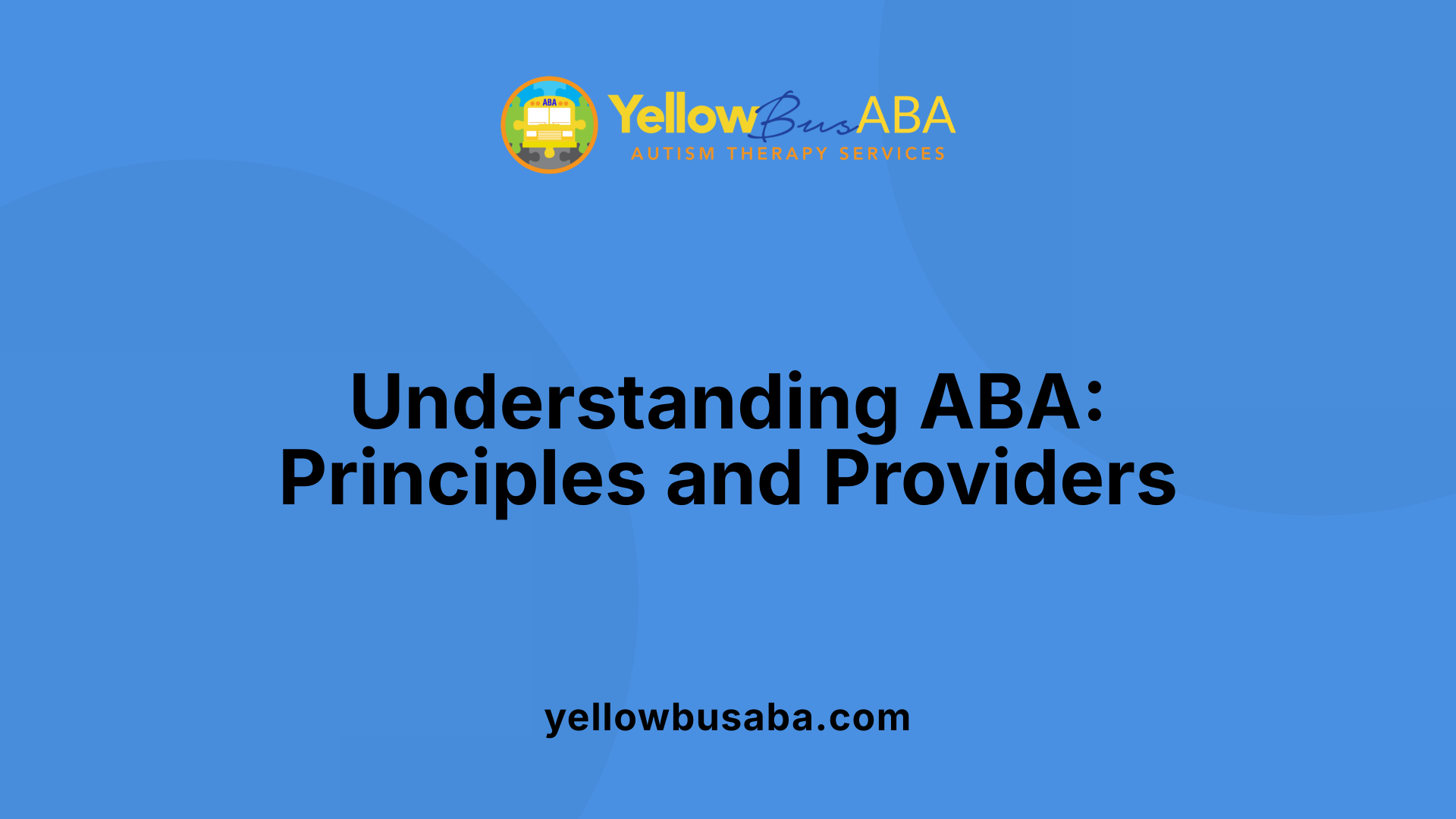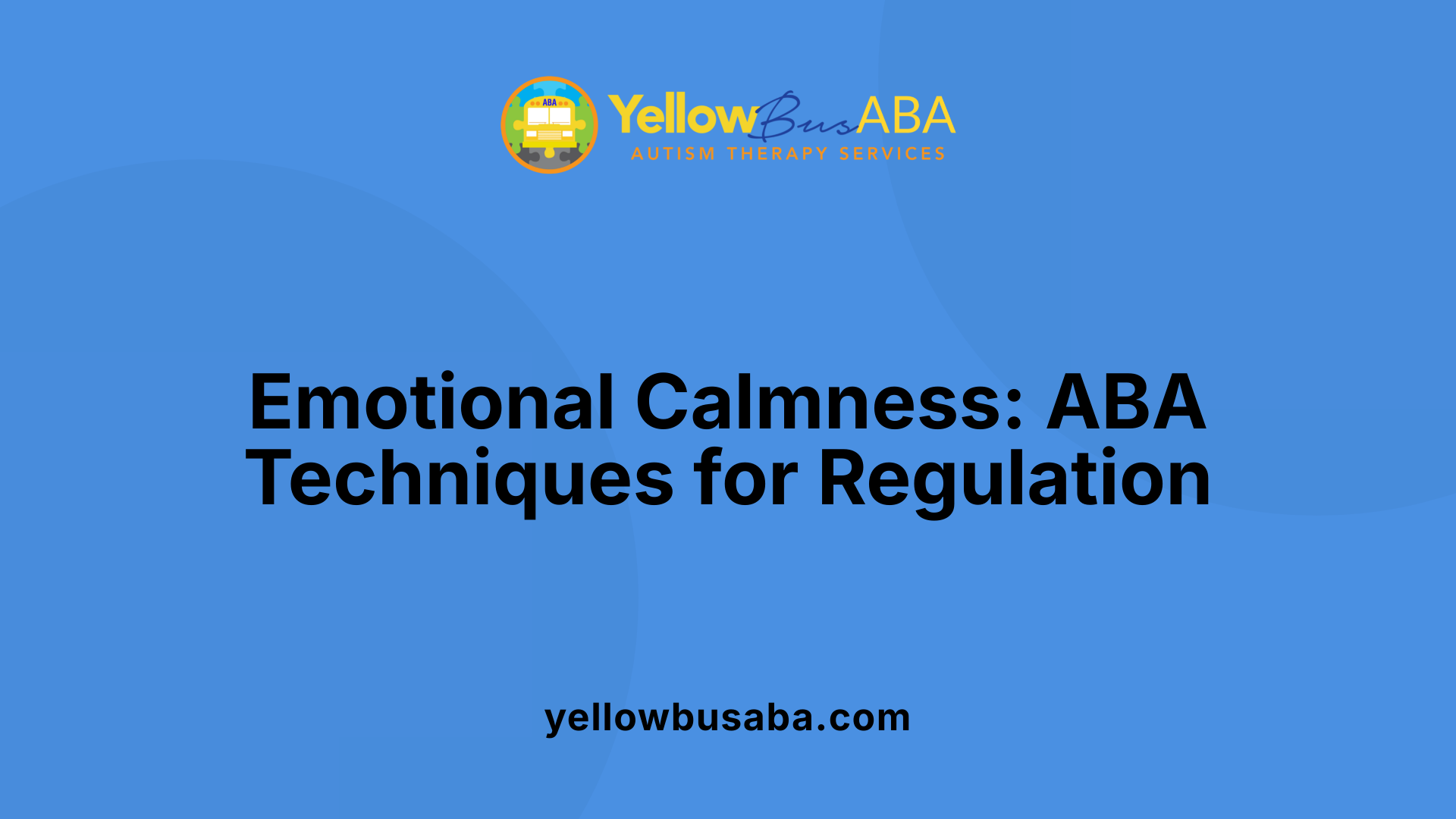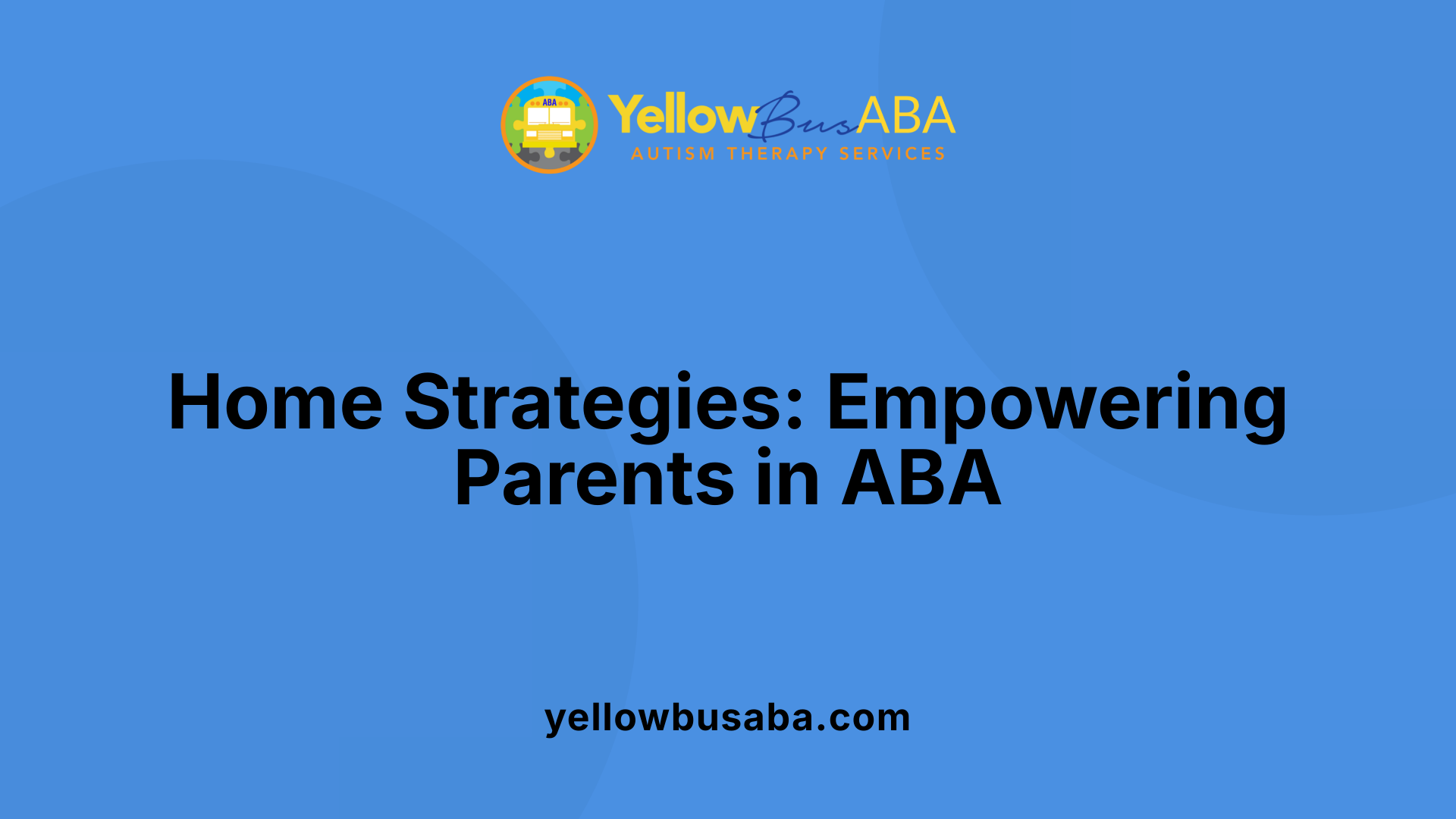How ABA Therapy Encourages Children to Develop Calming Strategies
October 27, 2025
Understanding Behavioral Techniques That Help Children Self-Regulate

What Is ABA Therapy and How Does It Support Emotional Calmness?
Applied Behavior Analysis (ABA) therapy is a structured, evidence-based approach that supports children, especially those with autism, in learning new skills and managing behaviors. Among its many applications, ABA plays a crucial role in teaching children calming strategies by analyzing and influencing behavior through reinforcement and tailored interventions. This article explores how ABA therapy encourages children to develop emotional regulation and practical calming techniques, improving their capacity to handle distress and sensory overload.
Foundations of ABA Therapy: Principles and Providers

What is Applied Behavior Analysis (ABA) therapy?
Applied Behavior Analysis (ABA) therapy is a science-based approach focused on understanding and changing behavior through learning principles rooted in behaviorism. It seeks to increase positive behaviors and reduce those that may be harmful or interfere with daily life by using reinforcement techniques.
ABA therapy uses structured, individualized programs designed to help children with autism and other developmental challenges develop social, communication, and daily living skills. Methods may include breaking down complex tasks into smaller steps, like teaching a child to brush their teeth by reinforcing each successive action.
Central to ABA is the understanding of the ABCs: Antecedent (what happens before a behavior), Behavior itself, and Consequence (what follows). Therapists analyze these factors to modify behaviors effectively.
Who provides ABA therapy and what qualifications do they have?
ABA therapy is delivered primarily by Board Certified Behavior Analysts (BCBAs) and Registered Behavior Technicians (RBTs).
- BCBAs hold graduate degrees in fields such as applied behavior analysis, psychology, or education. They undergo specialized training, supervised experience, and pass rigorous certification exams through the Behavior Analyst Certification Board (BACB).
- RBTs are paraprofessionals trained to implement ABA therapy under BCBA supervision. They must complete specific training and certification requirements.
Both roles require ongoing professional development to maintain certifications and ensure delivery of evidence-based, ethical treatment.
What fundamental behavioral principles underlie ABA therapy?
ABA therapy is grounded in the principles of operant conditioning, focusing on how behaviors are influenced by their consequences.
- Positive reinforcement rewards desirable behaviors, encouraging their recurrence. For example, a child might receive praise or tokens for completing a task.
- Negative reinforcement involves removing unpleasant stimuli when a desired behavior occurs.
Therapists utilize techniques such as prompting, shaping (gradually molding behavior), task analysis (breaking tasks into smaller units), and functional behavioral analysis to understand the reasons behind certain behaviors.
Therapy plans usually focus on one behavior at a time with individualized goals to maximize effectiveness.
This scientific, data-driven approach enables therapists and families to support children's growth in skills and emotional regulation effectively.
Techniques in ABA That Empower Children to Calm Themselves

What techniques are commonly used in ABA therapy?
Applied Behavior Analysis (ABA) therapy uses several effective techniques to help children learn how to calm themselves and manage their emotions.
One primary method is positive reinforcement, where children receive praise, tokens, or preferred activities when they demonstrate calming behaviors or use appropriate coping strategies. This encourages them to repeat these behaviors.
Visual supports such as emotion cards, First-Then boards, and social stories provide clear cues to help children recognize their feelings, anticipate changes, and handle frustration in healthy ways. These aids reduce anxiety and make abstract emotions more understandable.
ABA also teaches replacement behaviors — healthier ways to cope instead of reacting negatively. For example, children learn to ask for a break, use deep breathing, express their feelings with words or visuals, or move to a quiet space when overwhelmed. These skills are developed through modeling by therapists and caregivers, along with consistent reinforcement.
Functional Communication Training (FCT) is another core technique. It helps children communicate their needs and emotions effectively, reducing frustration and the likelihood of meltdowns.
By combining these methods—reinforcement, visual supports, and teaching replacement behaviors—ABA provides children with practical, tailored tools to self-regulate and calm themselves in challenging situations.
ABA’s Approach to Emotional Regulation and Calming Strategies

What Are Behavioral Triggers of Dysregulation?
Applied Behaviour Analysis (ABA) starts by identifying antecedents, or triggers, that cause emotional dysregulation in children. Common triggers include loud noises, demanding situations, social misunderstandings, physical discomfort, or sudden changes in routine. Recognizing these triggers helps therapists tailor interventions to prevent or lessen emotional meltdowns.
How Does ABA Teach Calming Strategies?
ABA therapists focus on teaching replacement behaviors to help children manage their emotions effectively. Calming strategies such as taking deep breaths, asking for a break, or moving to a quiet space are taught through modeling, reinforcement, and visual supports. Children learn to express emotions using words or visuals, enabling them to better communicate distress.
What Tools Are Used to Reduce Anxiety?
To support emotional regulation, ABA uses tools like emotion cards, First-Then boards, and social stories. These aids help children identify their feelings, prepare for transitions, and cope with frustration or sadness. They reduce anxiety by providing predictability and helping children understand and manage their emotions in a structured way.
By combining trigger identification, teaching practical calming techniques, and employing supportive visual tools, ABA offers a comprehensive framework to assist children in developing better emotional regulation and reducing anxiety.
Parental Involvement and Home-Based ABA for Calming Skills

What is the Role of Parents in ABA Therapy?
Parents play a crucial role in the success of ABA therapy by actively participating in sessions, observing their child's progress, and applying recommended strategies at home. Through parent training, families learn how to recognize signs of distress, practice consistent routines, and support their child's emotional development by modeling appropriate behavior. This partnership ensures therapy is individualized and extends beyond clinical settings.
How Can ABA Strategies Be Implemented at Home?
With guidance from certified behavior analysts, parents can use ABA techniques such as prompting, visual supports, and positive reinforcement to teach calming skills. For example, parents may use tools like emotion cards or First-Then boards to help children understand feelings and prepare for transitions. Breaking down complex tasks into manageable steps and reinforcing each success encourages skill development in a familiar environment.
What Are the Benefits of In-Home ABA Therapy for Skill Generalization?
In-home ABA therapy offers children the comfort and familiarity of their own environment, which can improve learning and help skills transfer to everyday situations. It provides flexible scheduling, enables family members to be more involved, and supports consistent use of calming techniques during daily routines. This setting reinforces emotional regulation strategies, reduces anxiety, and enhances the child’s ability to manage meltdowns or frustration effectively.
Measuring Success: Monitoring Progress in Calming and Behavioral Skills

How is the effectiveness of ABA therapy measured?
ABA therapy's effectiveness is gauged through careful data collection focused on specific behaviors targeted for change. Therapists and caregivers establish clear, measurable definitions for each behavior, such as how often or how long a behavior occurs. This data can include the frequency of positive behaviors like successfully using calming strategies or the reduction in occurrences of challenging behaviors such as meltdowns.
Data collection methods in ABA
Methods for tracking progress include:
- Frequency recording: Counting how many times a behavior occurs within a set period.
- Duration recording: Measuring how long a behavior lasts.
- ABC data collection: Tracking Antecedents (triggers), Behaviors, and Consequences to understand patterns.
- Use of visual tools: Charts and graphs to easily observe trends over time.
Regular data collection allows behavior analysts to objectively monitor changes and the impact of interventions. This continuous assessment helps pinpoint what is working and what may need modification.
Assessing improvements in emotional regulation and behavior
Improvements are judged by observable changes such as:
- Greater ability to recognize and express emotions appropriately.
- Increased use of coping skills like deep breathing or asking for a break.
- Reduction in the intensity or frequency of meltdowns and disruptive behaviors.
Therapists and parents actively observe these changes during sessions and in daily life to ensure gains are consistent.
Adjusting interventions based on progress data
When data indicates slow or no progress, ABA professionals adjust treatment plans. Changes might involve:
- Modifying reinforcement strategies.
- Introducing new prompting or shaping techniques.
- Altering the focus to a different skill while maintaining previously learned behaviors.
This dynamic process ensures interventions remain effective and tailored to the child's evolving needs.
Through this structured and ongoing measurement system, ABA therapy remains an evidence-based approach that closely tracks and supports children’s growth in emotional regulation and positive behaviors.
Encouraging Calm: The Lasting Impact of ABA Therapy on Children’s Emotional Growth
ABA therapy offers a well-founded, individualized approach to helping children develop effective calming strategies, essential for managing emotional dysregulation and sensory challenges commonly experienced in autism. Through positive reinforcement, targeted teaching of replacement behaviors, and supportive visual tools, children learn to identify their emotions, express distress appropriately, and apply calming techniques like deep breathing or requesting a break. Integral to this process is the role of qualified therapists and the active participation of parents, creating a consistent, supportive environment that extends beyond therapy sessions. Systematic data collection ensures that interventions remain tailored and effective, promoting steady progress. Ultimately, ABA therapy not only reduces the intensity and frequency of meltdowns but empowers children with lifelong skills for self-regulation and independence.
References
- Applied Behaviour Analysis (ABA) and autistic children
- ABA Therapy at Home: All You Need to Know
- How ABA Therapy Supports Emotional Regulation 🧠💖
- Managing Autism Meltdowns at Home: ABA Strategies for ...
- Applied Behavior Analysis (ABA)
- ASD Intervention Effectiveness: How Do We Measure ...
- A Comprehensive Guide to ABA Therapist Requirements
- Applied Behavior Analysis (ABA)
- Types Of ABA Therapy Jobs And Their Degree Requirements
- ABA Techniques: Strategies for Behavior Analysts - GSEP Blog






